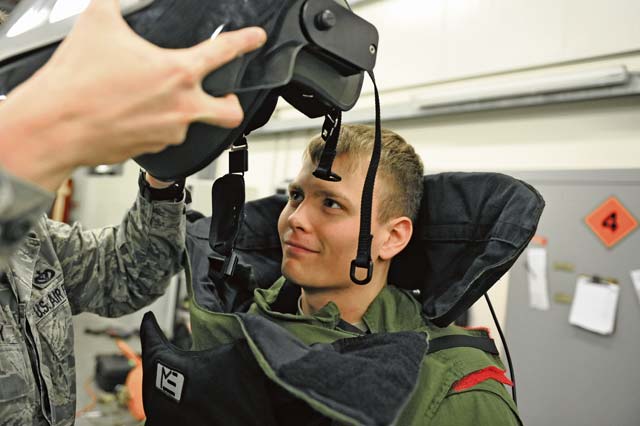
The Airmen of the 886th Civil Engineer Squadron Explosive Ordnance Disposal flight are constantly on guard. This team responds to emergencies and works with the host nation, keeping the KMC safe.
“Air Force EOD is a very small career field, (with) roughly 1,000 EOD technicians serving on active duty,” said Senior Airman Geoffrey Gilmer, 886th Civil Engineer Squadron explosive ordnance disposal specialist.
EOD is one of the largest anti-terrorism and force protection missions in U.S. Air Forces in Europe and Air Forces Africa, allowing them to provide home station support to three wings, 26 geographically separated units and two U.S. Army
brigades.
“Our technicians have disposed of hundreds of thousands of pounds of explosives over the past 10 years,” said Capt. Brandon Goebel, 886th Civil Engineer Squadron EOD flight commander. “Between home station and contingency operations, an EOD technician can be expected to destroy explosive hazards ranging from small arms ammunition to 2,000 pound airdropped bombs.”
As an air and space expeditionary force enabler, the EOD flight has a high deployment rate, as the bulk of their mission takes place downrange.
EOD teams train extensively for deployment scenarios, such as roadside bombs and improvised explosive devices.
“We are part of an ever-evolving game of cat and mouse with our adversaries,” Goebel said. “One side will modify their tactics and procedures while the other adjusts accordingly. This is truly the greatest challenge of EOD, and only continuous training keeps us on our edge.”
“We are part of an ever-evolving game of cat and mouse with our adversaries. One side will modify their tactics and procedures while the other adjusts accordingly.”
— Capt. Brandon Goebel, 886th Civil Engineer Squadron EOD flight commander
The job downrange is extremely hazardous. EOD members put their lives on the line every day to get the job done.
Ramstein EOD supports various missions, including operations Iraqi Freedom and Enduring Freedom, as well as presidential travel, range clearance and humanitarian operations.
“EOD is such a small career field that has been through so much together. It is one of the tightest communities in the military,” Goebel said.


